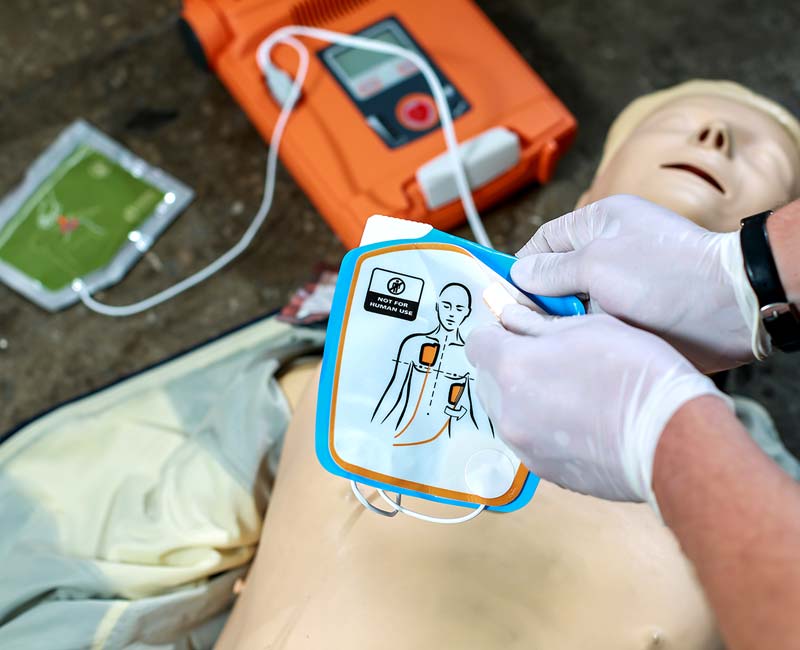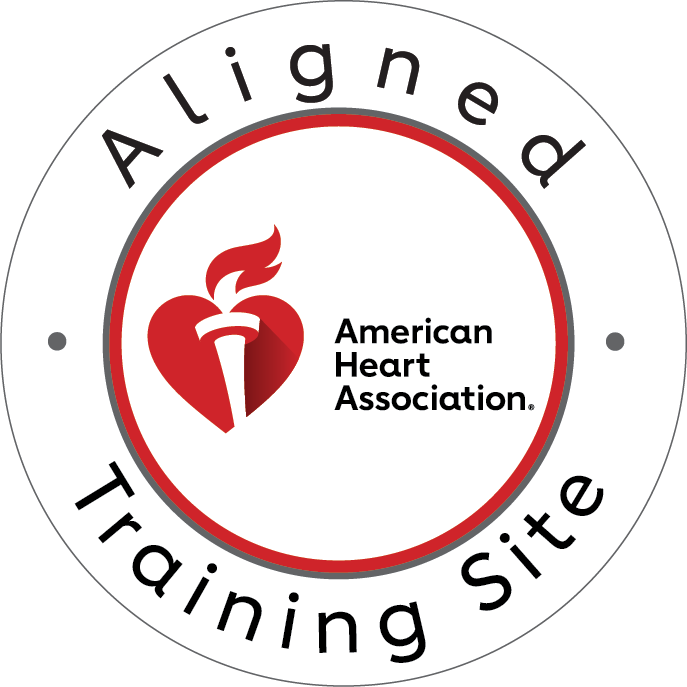In cardiac emergencies, every second counts. When someone’s heart suddenly stops beating, immediate intervention can mean the difference between life and death. One of the most effective tools in such situations is a defibrillator, a device designed to restore normal heart rhythm. The importance of a quick and informed response to cardiac arrest cannot be overstated, and this is where training and preparedness come into play.
CPR St. Louis, an American Heart Association training site, is dedicated to equipping individuals with the skills necessary to handle these emergencies. They offer initial certifications and renewals in Basic Life Support (BLS) for Healthcare Providers, Advanced Cardiovascular Life Support (ACLS), Pediatric Advanced Life Support (PALS), and CPR and First Aid courses. All their classes are designed to be stress-free and hands-on, ensuring that participants are not only knowledgeable but also confident in their abilities.
Understanding the critical role of defibrillators and being trained in their use can vastly improve outcomes in cardiac emergencies. This article highlights five key benefits of having access to and using a defibrillator, demonstrating why these devices are essential in both public and private settings.
1. Increased Survival Rates
Defibrillators are life-saving devices that deliver an electric shock to the heart, helping to restore a normal rhythm in cases of sudden cardiac arrest (SCA). The primary benefit of having access to a defibrillator is the significant increase in survival rates. According to the American Heart Association, the survival rate for out-of-hospital cardiac arrest can double or even triple when a defibrillator is used within the first few minutes of collapse.
Statistics clearly show the impact of early defibrillation. For every minute that passes without defibrillation, the chance of survival decreases by about 10%. However, when a defibrillator is used promptly, survival rates can be as high as 74%. These numbers underscore the importance of having defibrillators readily available in public spaces, workplaces, and homes.
Success stories further illustrate the power of defibrillators. There have been numerous instances where quick-thinking individuals, equipped with the knowledge of how to use an AED, have saved lives. For example, in 2018, a high school basketball coach in Texas saved a player’s life by using a defibrillator within seconds of the student’s collapse. Such stories are a testament to the critical role defibrillators play in emergency medical care.
Investing in defibrillators and ensuring widespread training can turn the tide in cardiac emergencies, significantly improving the chances of survival and recovery.
2. Quick Response Time
In the event of a cardiac arrest, time is of the essence. The first few minutes are critical, as immediate intervention can drastically improve the chances of survival. Having a defibrillator on-site allows for a quick response, which is often the difference between life and death.
The American Heart Association emphasizes that defibrillation within 3 to 5 minutes of collapse can lead to survival rates as high as 50-70%. This quick response time is crucial because every minute that defibrillation is delayed, the victim’s chances of survival decrease by approximately 10%. When defibrillators are easily accessible, it ensures that life-saving treatment can begin before emergency medical services arrive.
Consider the scenario of a sudden cardiac arrest occurring in a public place like a shopping mall or a sports stadium. If a defibrillator is available on-site, trained staff or even bystanders can immediately intervene, delivering the necessary shock to restart the heart. This immediate response is often facilitated by Automated External Defibrillators (AEDs), which are designed for ease of use by non-medical personnel.
Real-life cases underscore the importance of quick response times. In 2019, a man collapsed at a busy airport, and within moments, airport staff used an AED to restore his heartbeat. This rapid response was pivotal in saving his life, highlighting the effectiveness of having defibrillators readily available in high-traffic areas.
By reducing the time it takes to administer a shock, defibrillators significantly enhance the likelihood of survival and recovery, demonstrating their indispensable role in emergency preparedness.
3. Easy to Use for the Public
Automated External Defibrillators (AEDs) are specifically designed to be user-friendly, making it possible for even untrained bystanders to provide critical care during a cardiac emergency. These devices come with clear, step-by-step instructions, often accompanied by voice prompts, ensuring that anyone can operate them effectively.
The simplicity of AEDs cannot be overstated. When a cardiac arrest occurs, panic and confusion can set in, but AEDs are designed to guide users through the process calmly and clearly. The device typically instructs the user to place the pads on the patient’s chest and then analyzes the heart’s rhythm to determine if a shock is needed. If a shock is necessary, the AED will prompt the user to deliver it. This straightforward process makes AEDs accessible to the general public, significantly enhancing emergency response capabilities.
Training provided by organizations like CPR St. Louis further demystifies the use of AEDs. Their hands-on, stress-free courses ensure that participants gain practical experience, boosting their confidence in using these life-saving devices. Participants learn not only how to operate AEDs but also the importance of timely and effective intervention.
Real-life examples of non-medical professionals successfully using AEDs abound. In one notable instance, a gym member in California saved a fellow exerciser’s life by using the gym’s AED. Despite having no formal medical training, the user was able to follow the device’s instructions and deliver the necessary shock, demonstrating the AED’s effectiveness and ease of use.
The design and functionality of AEDs, combined with accessible training, empower the public to act swiftly and decisively in cardiac emergencies, significantly increasing the chances of survival and positive outcomes.
4. Community Confidence and Preparedness
Having access to defibrillators not only saves lives but also instills a sense of confidence and preparedness within a community. When community members know that they have the tools and training to respond to cardiac emergencies, it fosters a proactive and supportive environment.
Access to defibrillators, coupled with proper training, reassures individuals that they are capable of handling a crisis. This sense of preparedness can alleviate anxiety and fear surrounding emergencies, empowering people to act swiftly and effectively. For example, schools with AEDs and trained staff members create a safer environment for students and faculty, knowing that they are equipped to respond to cardiac emergencies.
The psychological impact of having defibrillators available cannot be overlooked. Communities that invest in AEDs and training programs demonstrate a commitment to the well-being of their members. This commitment can lead to increased community cohesion and a collective sense of responsibility. When people feel supported and prepared, they are more likely to intervene and assist during emergencies, potentially saving lives.
Testimonials from trained individuals highlight the positive impact of defibrillator access on community confidence. For instance, a business owner in New York shared how installing an AED and training employees transformed their workplace atmosphere. Employees felt more secure and valued, knowing that their employer prioritized their health and safety.
Moreover, community-wide training initiatives, like those offered by CPR St. Louis, can further enhance preparedness. These programs bring people together, fostering a shared understanding of emergency response procedures and creating a network of capable responders.
By boosting community confidence and preparedness, defibrillators play a crucial role in not only improving emergency outcomes but also strengthening the fabric of the community. When people are equipped and ready to respond, everyone benefits from a safer, more resilient environment.
5. Legal Protection and Encouragement
One of the significant benefits of using a defibrillator is the legal protection provided to individuals who administer aid during emergencies. Good Samaritan laws are in place across many regions to protect those who assist others in distress from legal liability, provided they act in good faith and within the scope of their training.
These laws encourage bystanders to use defibrillators without the fear of being sued if something goes wrong. The intention is to remove barriers to helping others, fostering a more responsive and caring community. Good Samaritan laws typically cover laypersons and trained individuals, ensuring that those who step in to save a life are not penalized for their efforts.
Health organizations and legal bodies actively encourage the public to use AEDs. The American Heart Association, for instance, promotes the widespread availability and use of AEDs as part of its mission to reduce deaths caused by cardiac arrest. They provide guidelines and support for implementing AED programs in public spaces, schools, workplaces, and homes.
The minimal risk involved in using AEDs is outweighed by the potential benefits. AEDs are designed to be safe and straightforward, reducing the likelihood of misuse. Moreover, studies have shown that bystander use of AEDs significantly increases survival rates without causing harm. This reinforces the importance of legal protections that support and encourage the use of defibrillators.
Understanding the legal safeguards can empower more people to act during cardiac emergencies. When individuals know they are protected by law, they are more likely to intervene and use defibrillators, ultimately saving lives.
In summary, the legal protection and encouragement to use defibrillators play a vital role in enhancing public willingness to respond to cardiac emergencies. These measures ensure that fear of legal repercussions does not stand in the way of life-saving actions, promoting a culture of proactive and compassionate care.
Conclusion
In summary, the availability and use of defibrillators offer numerous benefits that can drastically improve outcomes in cardiac emergencies. These benefits include increased survival rates, quick response times, ease of use for the public, enhanced community confidence and preparedness, and strong legal protections and encouragement.
Increased survival rates are perhaps the most compelling benefit, as defibrillators significantly boost the chances of survival when used promptly. Quick response times facilitated by the presence of defibrillators ensure that treatment can begin immediately, often before emergency medical services arrive, which is crucial in saving lives. The ease of use of Automated External Defibrillators (AEDs) means that even individuals without medical training can confidently and effectively operate these devices, further broadening the pool of potential lifesavers in any given situation.
Moreover, having defibrillators accessible enhances community confidence and preparedness, fostering a sense of safety and readiness among community members. This preparedness is not only practical but also psychological, as it builds a collective willingness to assist in emergencies. Finally, the presence of legal protections under Good Samaritan laws removes the fear of legal repercussions, encouraging more people to take action during critical moments.
Organizations like CPR St. Louis play a crucial role in promoting these benefits through their comprehensive training programs. By offering stress-free, hands-on courses in BLS, ACLS, PALS, CPR, and First Aid, they ensure that individuals are well-equipped to handle cardiac emergencies effectively.
In conclusion, the benefits of having access to defibrillators and being trained in CPR are undeniable. These tools and skills can make a critical difference in saving lives during cardiac emergencies. As highlighted throughout this article, organizations like CPR St. Louis offer comprehensive training programs in CPR certification St. Louis, equipping individuals with the knowledge and confidence needed to respond effectively in emergencies.
To take action and become a proactive member of your community, consider enrolling in CPR certification St. Louis courses offered by CPR St. Louis. Their stress-free, hands-on training ensures that you are well-prepared to handle cardiac emergencies with skill and confidence. By becoming CPR certified through CPR St. Louis, you not only enhance your abilities but also contribute to a safer and more prepared community.
Don’t wait until an emergency strikes – take the initiative to enroll in CPR certification St. Louis courses today. Together, we can make a difference in saving lives and promoting health and safety in our communities.





